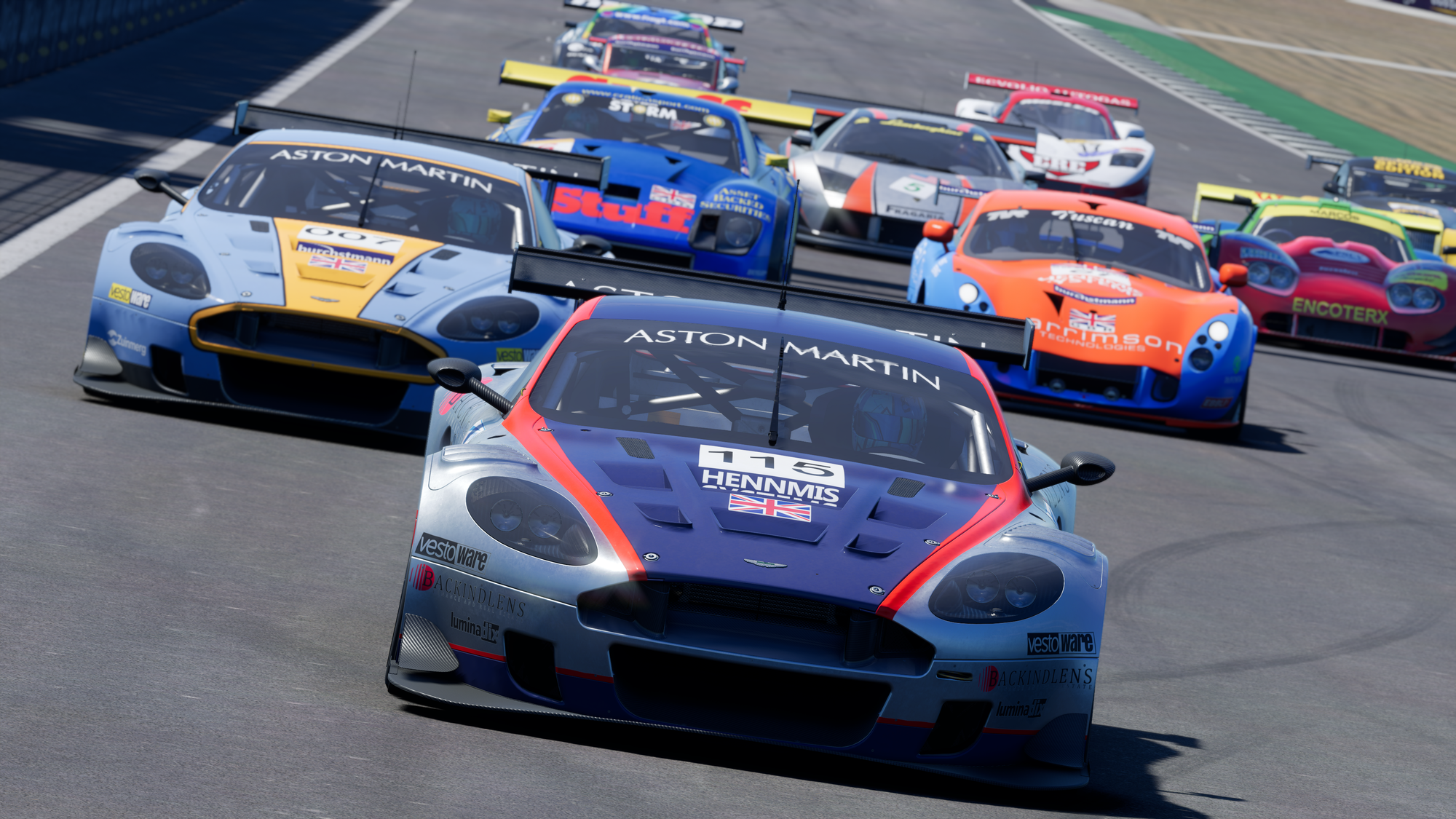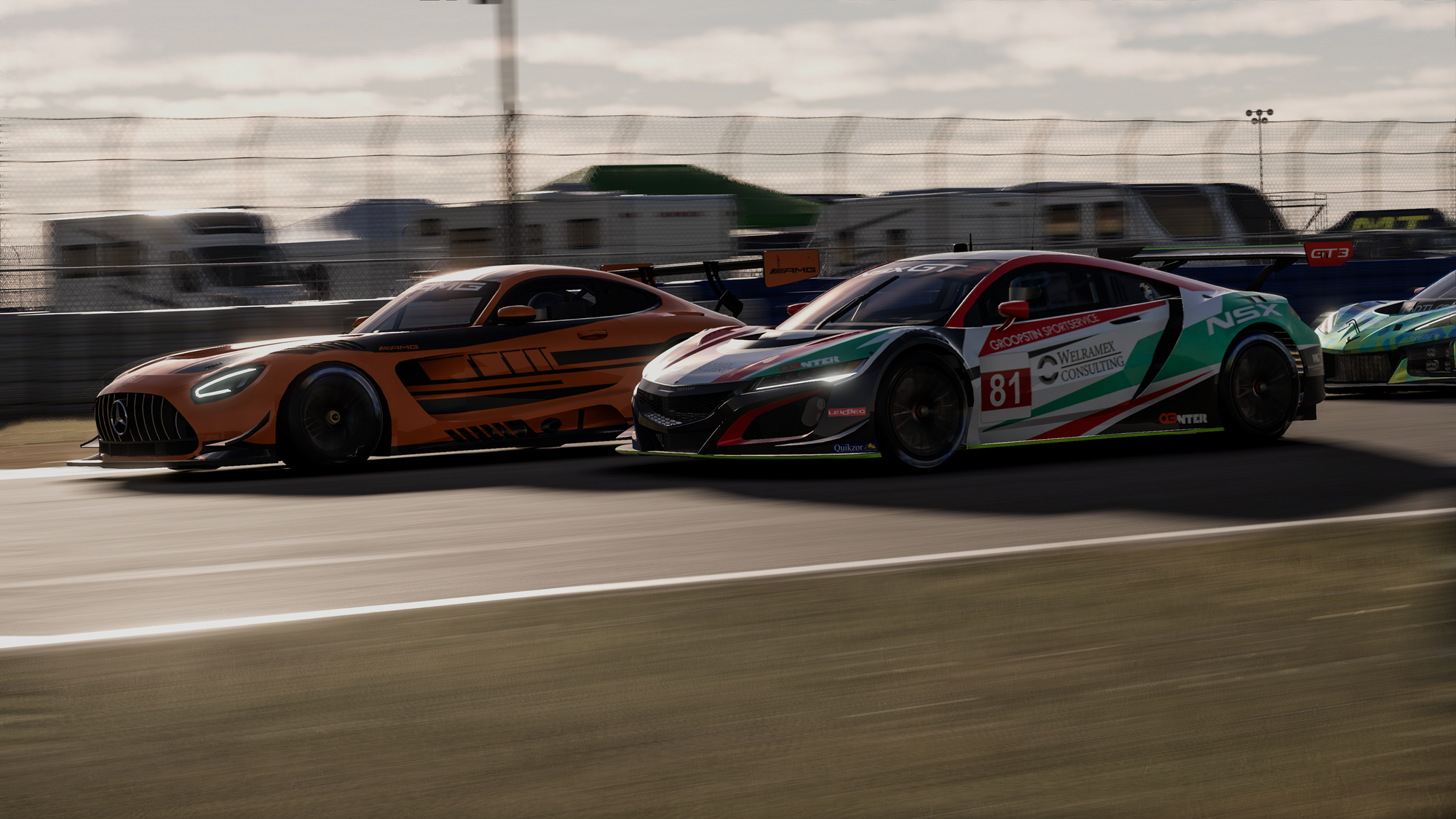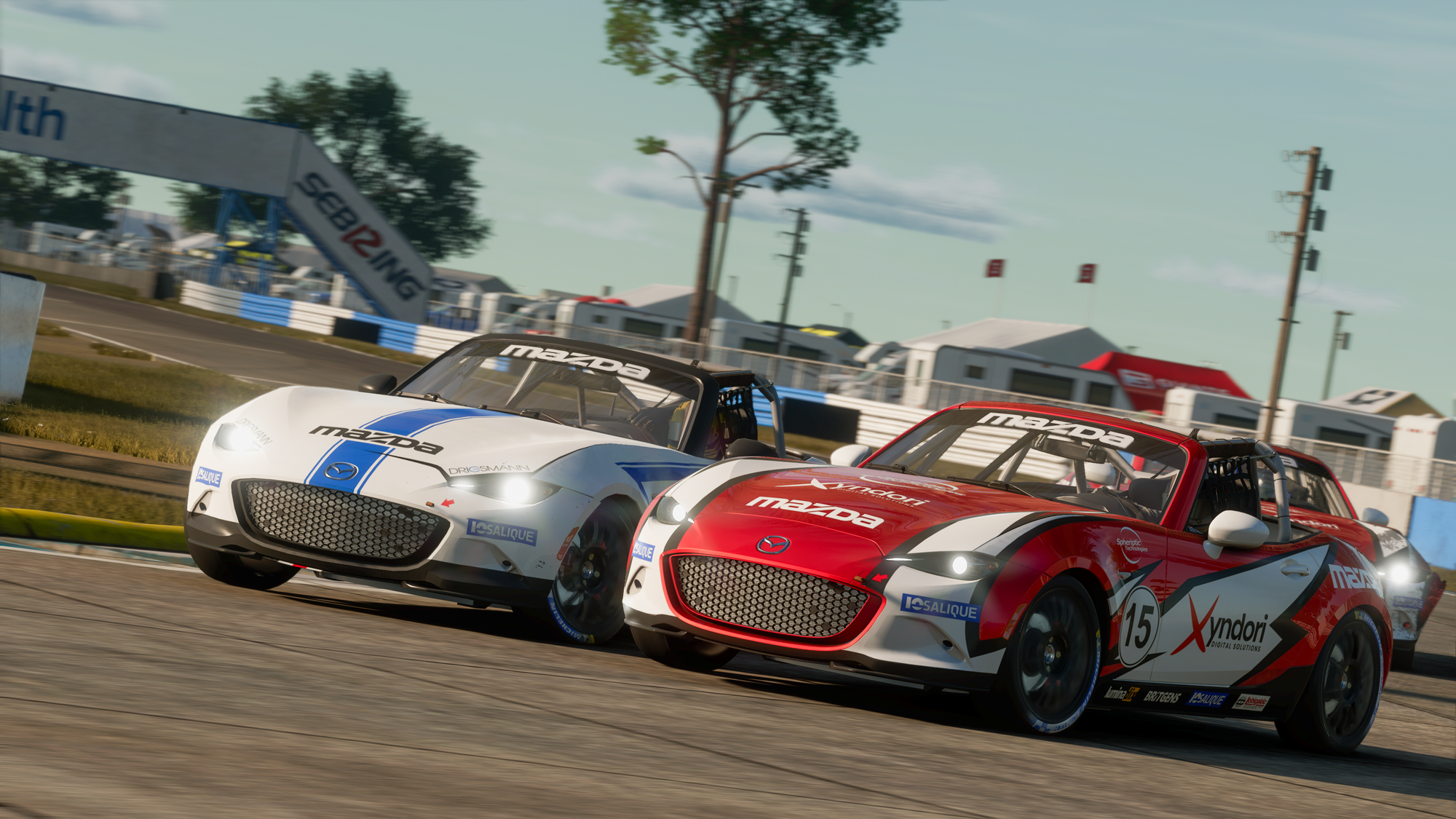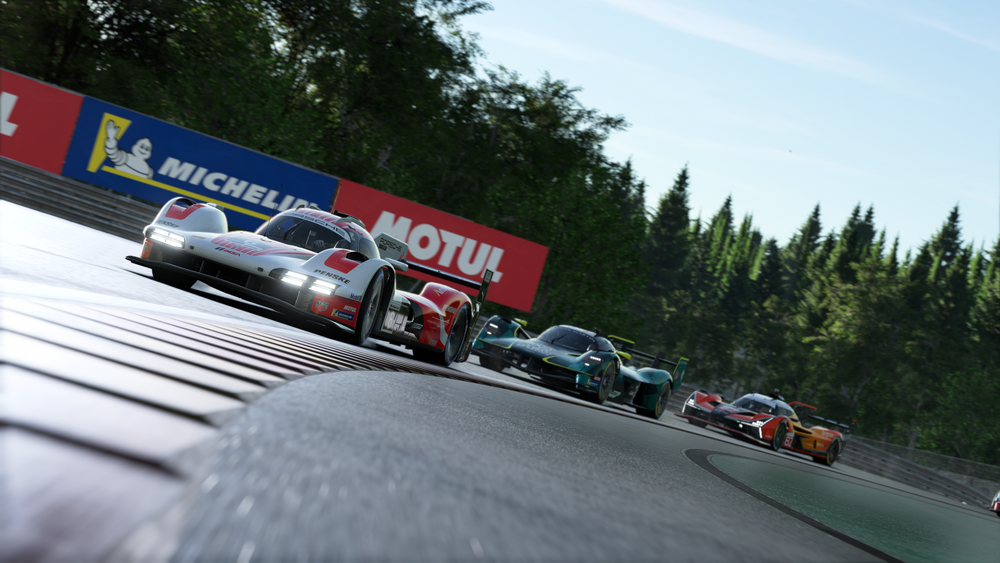New game Project Motor Racing went from pre-release hype to a post-launch crisis in a matter of hours on Tuesday, a day that ended with the game's chief admitting they "effed up".
While initial criticism of the game straight after it became available was met with suggestions from the developers on social media for settings tweaks that would supposedly fix the gremlins, it wasn't long before long, apologetic statements were being published, showing that the problems ran much deeper than a few launch-day hiccups.
So what happened? Players are being told that the majority of the problems are the result of a day one patch that was released.
The game's head Ian Bell has said that "some bugs crept in" as a result of his team working long shifts until 4am to get the first patch ready quickly, even though the original version of the game was, in his words, a "solid build".

Many of the problems being cited with the game - some of which we'll explain our first hand experience of shortly - are being put down to this patch. Another patch to fix these problems is being promised, but only once "it's properly tested", according to Bell.
The idea that a day one patch was rushed out for a game that was already solid seems like a strange approach. With any product, if version 1.0 is in good shape, why would you hurry through the next spec?
A few hours before the tone from the developers shifted and apologies were made, Bell's position on social media was that "every game we've ever shipped gets panned. Then gains traction, then is loved".
Whatever has gone on, it's a disastrous start for a game that has been previously billed as a spiritual successor to the first two Project Cars games, or even the popular GTR simulation series of the 2000s.
What's it like to play?

It's hard to know where to start with this. The Race is not the place you need to come to if you want a full-blown review of the game - there are other places more experienced and more authoritative when it comes to that content, like our sister title, Traxion.
But as a lifelong player of racing games on console, and someone who primarily plays offline, my intention was always to examine two of the most eye-catching claims being made in the months leading up to Project Motor Racing's release. Because big promises were made about the driving experience and handling for gamepad/controller players, and how good the AI was going to be to race against.
Sadly, in its current form, PMR falls hopelessly short on both counts.
Let's do the handling first. We've tried all the categories in the game, which has a sportscar/endurance racing-heavy roster of machinery. So far only a handful of those categories are even playable.
The GT4 cars are quite fun, the older N-GT class is OK, and the entry level Mazda MX-5s are drivable but feel a bit unresponsive, soft and heavy. So not ideal for the entry level players they're supposed to be aimed at.

The LMP class of early 2000s was the only category of high-speed cars we could even keep on the track playing on an Xbox with a controller and, while they were at least relatively consistent to drive, they slide around a lot.
Everything else we've found to be varying degrees of disappointing or downright unplayable. The GT3 cars, of which there are many, are a bit all over the place. You may be able to hook up a nice lap from time to time, but they don't give you any confidence over a longer run. PMR isn't the only game to miss the mark with GT3, as the console version of Assetto Corsa Competizione was also massively underwhelming to play with a controller.
As for the faster cars, it's hard to know where to begin. PMR's 'LMDH' class features nine cars from the thriving top-level of the World Endurance Championship or IMSA SportsCar Championship, and with Le Mans Ultimate a long way away from becoming a console title, there was the potential here for this game to offer a stopgap solution for console players who want to get a taste of elite sportscar racing.
Unfortunately, right now these cars are the most broken in the game. Our experience on Xbox so far is that you can't even drive them in a straight line. They veer off course in ways that bear no relation to the inputs you're giving, and that's before you get to the corners, where you turn in, and the car might genuinely go straight on, or try to spin on the spot.
If you do make it round a corner, you'll be slow, and very sideways, and at any moment the steering could just straighten itself up and send you off the track. The experience is similar with the Group C cars, which in the original Project Cars titles were often the most forgiving of the high-powered prototypes.

All of those problems mean that another small drawback of this game instantly became almost irrelevant, and that's the fact that console players can only race against 15 AI opponents, while PC players get 32-car grids.
For a game entirely focused on sportscar/GT endurance racing, to have grids that are so small is really disappointing. You still have the option to create multi-class racing, but splitting a field of 16 cars into multiple classes feels a bit pointless. This news broke just before the release of the game, with Bell saying that the developers were "trying" to increase the number of opponents for console players, but adding that the physics of the game would not be compromised just to create bigger grids.
Whatever the reasons for it, 16 cars feels very small for a supposedly high-end racing game in 2025. I still regularly play the 1990s Playstation classic 'TOCA 2' based on the British Touring Car Championship, and that game had 16-car grids. And, believe it or not, much better AI opponents.
Another TOCA 2 season done, another championship challenge derailed by James Thompson AT THE SAME CORNER he wiped me out last season. Then Peter Kox had a go too a lap later!
— Glenn Freeman (@glennfreeman39) November 19, 2025
Missed out on the title by four points to @RickardRydell 🏆
Thanks Honda... pic.twitter.com/IfNPFB0i82
Which brings us onto another troubled area of the game in its first-day spec. In what feels like a tribute to early PS1 games that didn't do as good a job as TOCA, the AI cars drive with almost no awareness of the player car. So even once you get the hang of keeping one of the few cars on track that are mildly OK to drive, as soon as you start racing you'll be fired off every time.
This appeared to also be a result of the day one patch, with Bell saying "some AI code" has already been "reverted" after changes were made that "affected their proximity logic adversely".
It'll be interesting to see if collisions with the AI cars will also be rebalanced. Because on day one not only did they drive through you, but in any contact the player's car would be the one flying off the road while the AI stayed locked to their racing line.
This is by no means a problem exclusive to PMR. Most racing games have terrible player/AI collision physics at the moment, and it really harms the experience for those who want to play these games offline. For some reason multiple developers have created titles where your opponents can spin you out, but it’s almost impossible to return the favour when roles are reversed.

In the 'Message to the Community' statement published on the Project Motor Racing website on Tuesday night, the developers rightly point out that there are real people who put a lot of work into this game, and "it hurts knowing we didn’t hit expectations on release".
It's easy to forget that human side of a development studio, and none of those people will have set out with the goal of releasing something this flawed.
But at the same time, real people buy these games too, with real money that they've earned and saved. And this isn't some low-budget, independent project or an early access release that only set players back £20. The standard Xbox version we played costs roughly £60 right now, with the 'Year 1' season pass bundle taking that price up to £87.99 on the Xbox store.
With a slightly limited pool of car categories to choose from (ignoring how few of those are currently playable) and less than 20 tracks if you focus on circuit locations rather than the pumped up figure boosted by venues featuring multiple layouts, the experience of playing this game needed to be out of this world to justify the price.
We'll keep an eye on the updates that are made to it, even if it seems the most significant changes will need to be made "at engine-level" and will "take time", according to the developers, who stressed: "While we can make small adjustments, more structural fixes take longer, require testing, and will arrive steadily as we complete them."
If the base version of Project Motor Racing really was so good before the day one patch was added, it makes you wonder why more time wasn't spent on it before it was piped into the game.



